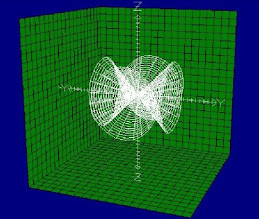I love the way Feynman presents Quantum Physics. In his renowned public lecture QED: The Stange Theory of Light and Matter (1985), he says: You will have to brace yourselves for this - not because it is difficult to understand, but because it is absolutely ridiculous: All we do is draw little arrows on a piece of paper - that’s all! That's the essence of Quantum Physics: arrows. Mathematicians call arrows vectors, and there are very advanced, abstract ways to describe operations on such objects. But the mathematical artillery must not hide the fact that physically, we are handling with very simple objects: objects that are alike arrows, or rods, or needles, or ballpens, or baseball bats.

A child knows intuitively how such objects behave. Tintin's cartoon "Ottocar's scepter" shows a comic situation, in which the clue consists in correctly inferring how such an object could pass through a grid. In order to make sense of Quantum Physics, we'll have to brace ourselves for this: all we do is draw little arrows. So how could arrows help us to grasp the essence of Quantum Physics? The first thing is maybe to re-read Feynman's QED, or just visioning its 4 QED public lectures: http://vega.org.uk/video/subseries/8. Than just think about it.
There is not simpler a particle than a photon (apart maybe of a neutrino which is experimentally equivalent to a photon with zero frequency):
- it has no inertia, its departing velocity with respect to the emitter is always the same (provided it does not find obstacles on its way),
- it has a very simple polarization, when correctly oriented, it passes through a wire grid,
- when constrained between two limits, its frequency may take only discrete values,
- many photons with the same polarization may be beamed together,
- in the quantum ocean of other quantum particles (essentially other photons or neutrinos), one photon creates and interacts with (we say interfers with) the wave it generates in that ocean (physicists speak of a field).
Such a particle may be represented by a rotating arrow whose rotational plane has a constant orientation between two obstacles.
This common sense way of interpreting Quantum Mechanics is explored at Wikiversity/Making_Sense_of_Quantum_Mechanics.


